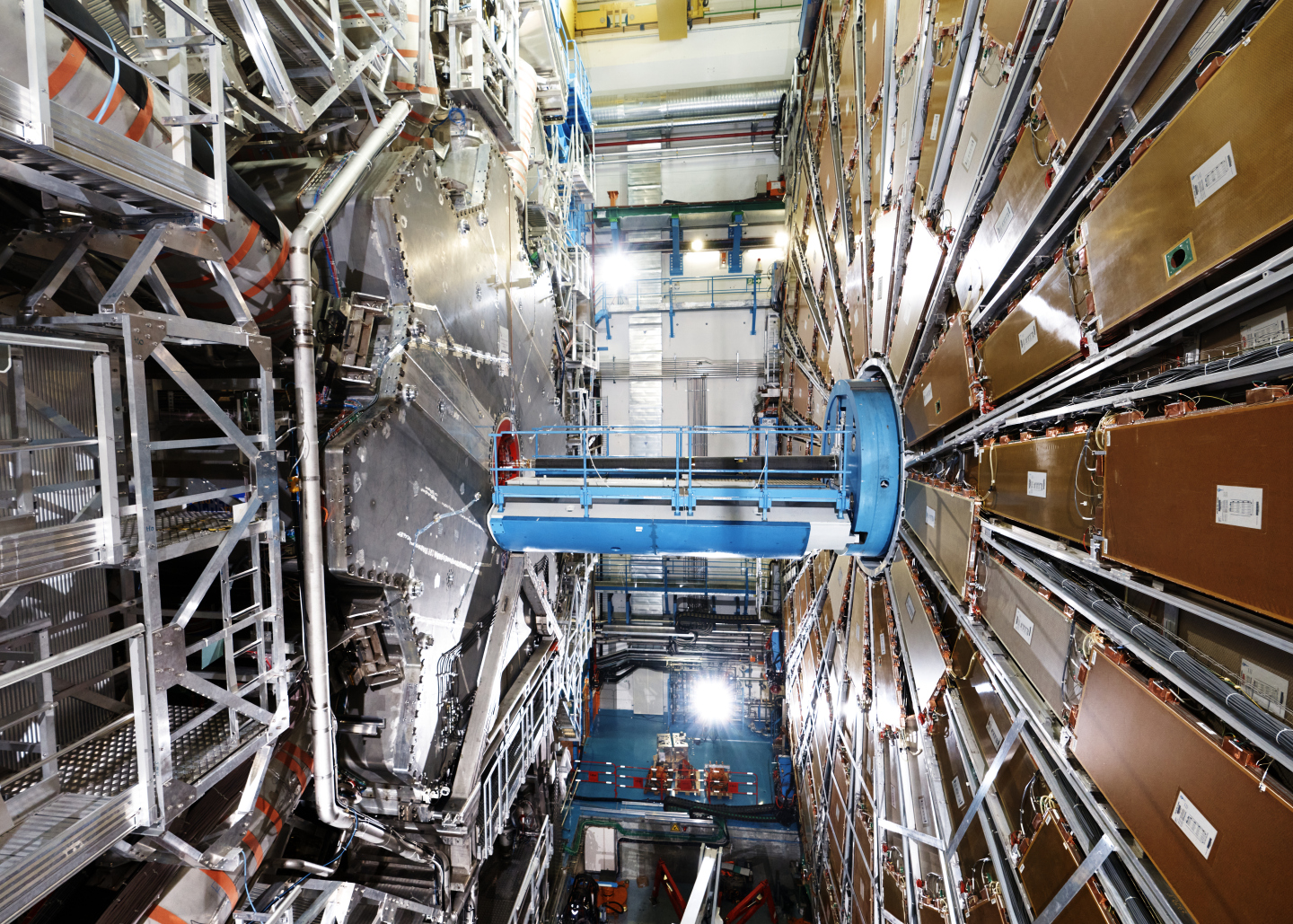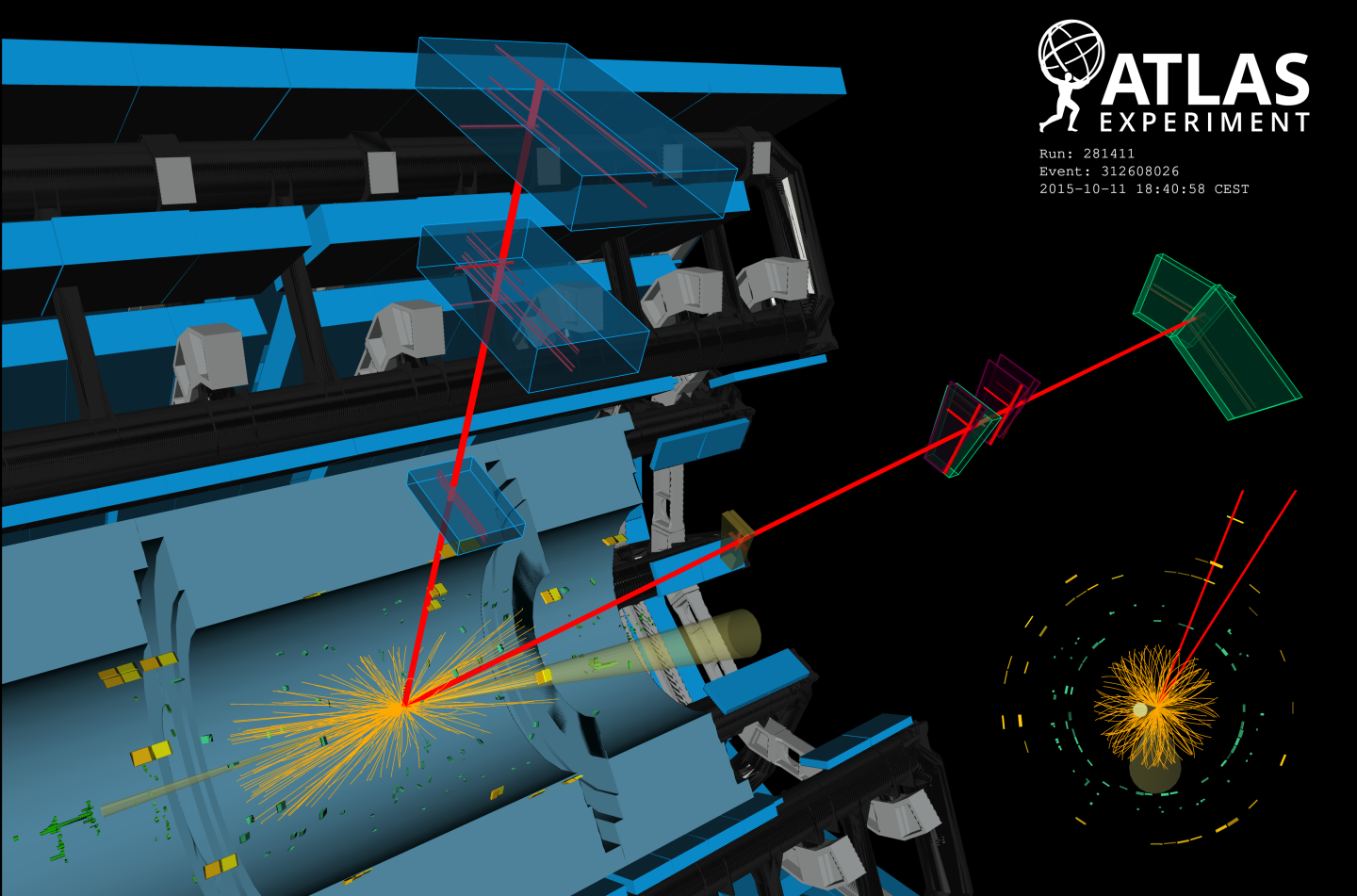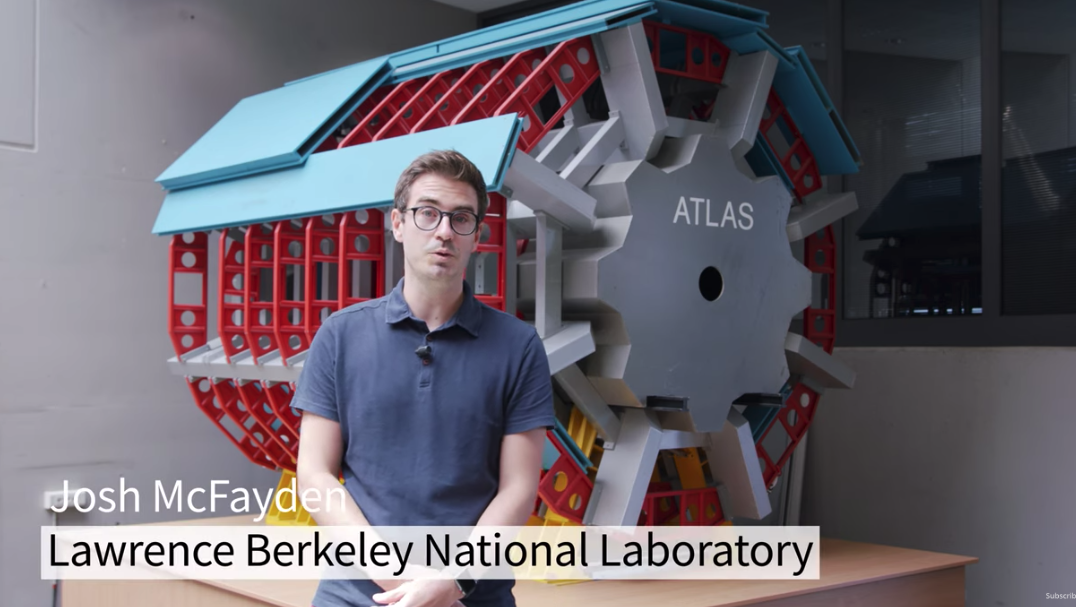Underground at the Switzerland-France border, the Large Hadron Collider (LHC) at CERN holds the record for the world’s largest particle accelerator. Its ring alone is nearly 17 miles around. With this tool, scientists smash together subatomic particles to help them better understand the tiny building blocks of the universe. One area that scientists use the LHC to study is the quark-gluon plasma.
Tag: ATLAS Collaboration

10 Years Later, Higgs Boson Discoverers Publish Refined Measurements
Particle physics changed forever on July 4, 2012. That was the day the two major physics experiments at CERN’s Large Hadron Collider (LHC), CMS and ATLAS, jointly announced the discovery of a particle that matched the properties of the Higgs boson—a particle theorized decades earlier. The discovery cemented the final piece in the Standard Model of particle physics. Now physicists from the CMS and ATLAS Collaborations detail high-precision results from their latest Higgs boson studies.

Berkeley Lab Scientists Contribute to New Exploration of Higgs Boson Interactions
A new analysis, featuring important contributions by Berkeley Lab scientists, strongly supports the hypothesis that the Higgs boson interacts with muons, which are heavier siblings of electrons and the lightest particles yet to reveal evidence for these interactions.

Another Win for the Standard Model: New Study Defies Decades-Old ‘Discrepancy’ With High-Precision Measurement
A new study dives into a decades-old discrepancy from a Standard Model of particle physics pillar known as “lepton flavor universality,” and provides strong evidence to resolve it.